A Horological Legend and a Rising Star Just Teamed Up to Launch a New Watch Brand

In an industry that so deeply reveres tradition and heritage, it can sometimes be a challenge to look to the future. It might be easy to feel that the days of great watchmaking live in the past when names like Abraham-Louis Breguet or even ones as recent as George Daniels were innovating. Yet, exceptional watchmakers are still ever-present in the industry today, ones who both respect the age-old art form at its core and have a drive to innovate without flashy gimmicks. Two of those watchmakers have come together today to form a new brand and launch their first watch. This is Renaud Tixier and its debut three-hander is called Monday.
If something about the name Renaud Tixier sounds vaguely familiar, it’s because one half of the powerhouse duo spearheading the brand is the legendary Dominique Renaud of Renaud & Papi SA. The manufacturer put Renaud on the map back in the ’80s after landing a major contract with IWC to help develop the most complicated modern wristwatch at the time, the Grande Complication Ref. 3770. But Renaud’s deep-rooted history in the field of watchmaking began long before that—he was born into it. Both of his parents were watchmakers. The two serendipitously met while working at Vacheron Constantin. Unsurprisingly, they helped establish Dominique Renaud’s fascination and appreciation for these mechanical objects at a young age.
More from Robb Report
Michael Schumacher's Custom Royal Oak, Bespoke F.P. Journe, and More Rare Watches Are Up for Auction
Vacheron Constantin and The Met Are Teaming Up for Watches Inspired by Famous Works of Art
Girard-Perregaux's Newest Laureato Watch Is Made From Lightweight Titanium
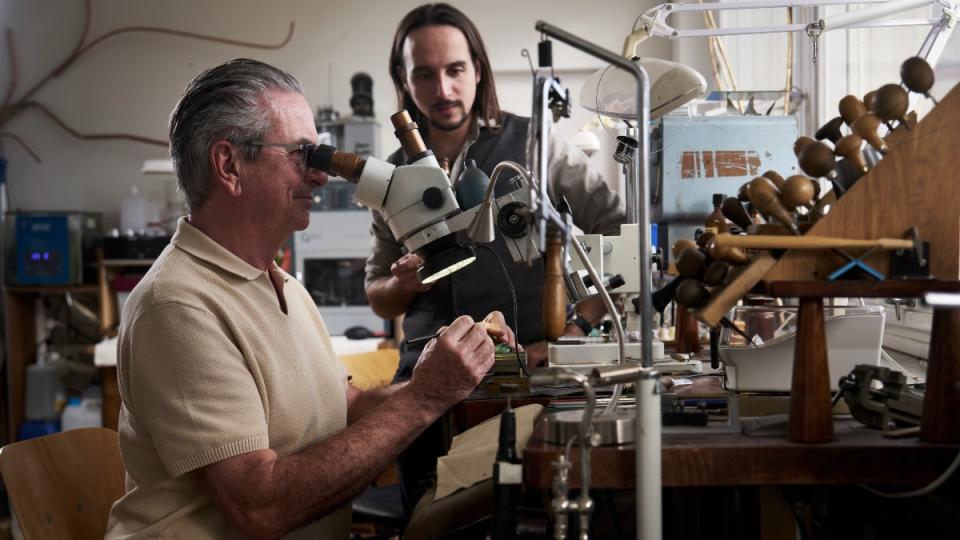
Renaud’s pursuit of watchmaking ultimately led him to Audemars Piguet in 1979 where he met fellow watchmaker Giulio Papi, with whom he would later establish Renaud & Papi SA. Renaud would go on to found a second company with the renowned watchmaker Christophe Claret, and between the two manufacturers, he would come to work with some of the top brands in the industry, including Breguet, Ulysse Nardin, Jaeger-LeCoultre, A. Lange & Söhne, Girard Perregaux, Parmigiani, Cartier, Franck Muller, and Harry Winston.
At the turn of the century, Renaud retired from the firms to pivot his focus in watchmaking back to the fundamentals, a philosophy that would not only lead him to Julien Tixier but also become a guiding principle of the brand they would create together. By 2018, Renaud had developed the blade resonator—a totally disruptive innovation to replace the traditional sprung balance—and debuted it in the DR01 TWELVE FIRST watch. This model and the technology it showcased caught the attention of a young watchmaker named Julien Tixier, whose resume includes work at Parmigiani Fleurier and Laurent Ferrier. Two years later, the two would finally meet at a conference where Renaud was presenting the DR01.
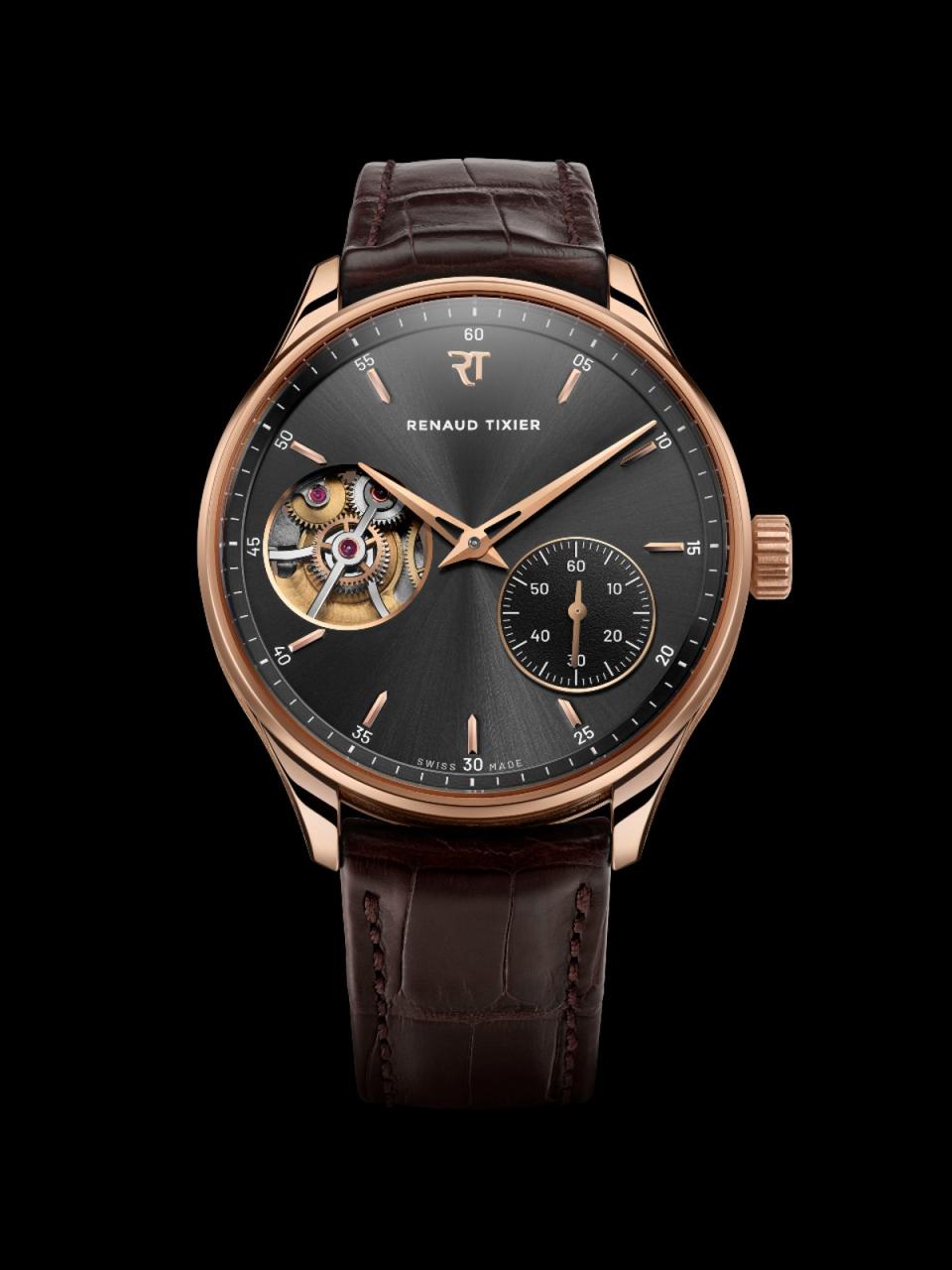
Before teaming up to launch a completely new watch brand, Renaud and Tixier collaborated on two exceptional projects. In 2021, they developed a totally one-of-a-kind timepiece called the Tempus Fugit that went on to be a finalist at the GPHG in 2022. A year later, the pair joined forces again to create an ultra-simplified, modular secular perpetual calendar for Furlan Marri. With two successful creations under their belts, it was time to take things to the next level, and they began developing their own namesake brand and their first watch.
It’s pretty exceptional what can be accomplished in a mere 12 months. In that time, Dominique Renaud and Julien Tixier conceptualized their brand with the ambition to revisit seven core horological principles— which will correspond to the seven days of the week—starting with the crucial aspect of energy. This led to the creation of a watch called Monday that appears to be a humble three-hander, but this watch is far from simple. It houses a brand new innovation—a kinetic engine micro-rotor poetically called “the dancer”—that completely redefines the limits and capabilities of the micro-rotor as we’ve known it.
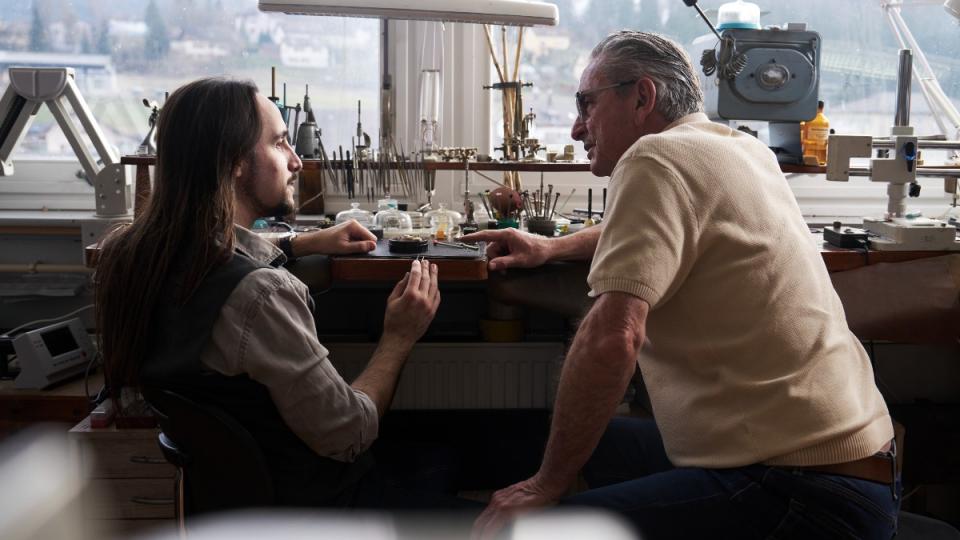
“The whole project came together in the span of just one year,” explains CEO Michel Nieto. “During the first three months, Dominique and Julien began working with engineers on technical drawings to turn Dominique’s vision into something more tangible. Then, Dominique and Julien started prototyping in October of 2023 and spent more than 1,000 hours to complete the prototype we’re able to present today.”
To date, the micro-rotor has always carried a very specific set of pros and cons. Practically, its design allows a watch to take on slimmer proportions. Aesthetically, it allows for an unobstructed view of the movement architecture. However, because of its reduced size compared to a standard central rotor or even a peripheral rotor, a micro-rotor hasn’t been able to generate as much power and has long been criticized for its inefficiency, until now.
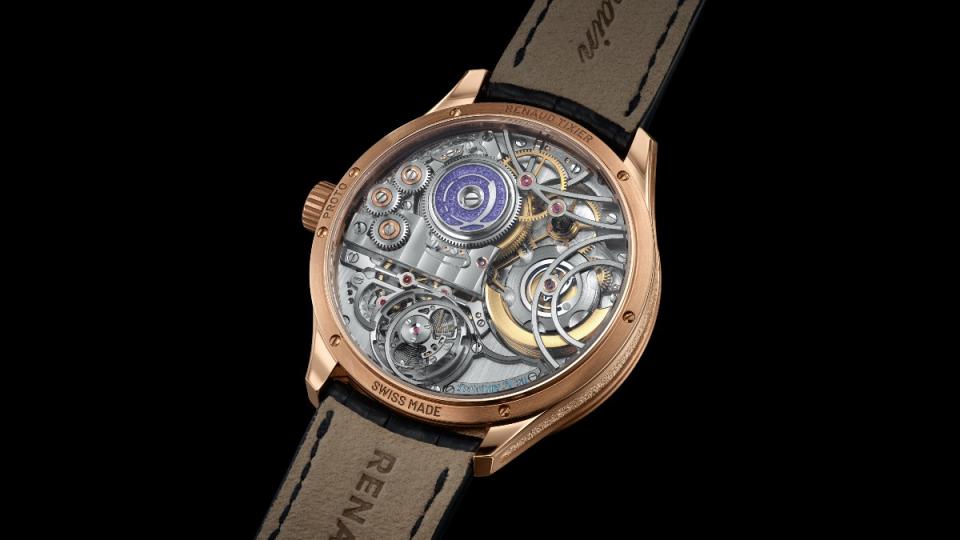
First, Renaud honed in on the micro-rotor’s key weakness: to function properly, the micro-rotor, in its current design, requires a large amplitude of movement to produce energy. Yet, a wristwatch is full of potential energy thanks to the constant motion of the wearer, no matter how subtle—even a simple hand gesture during conversation. So, Renaud began to consider how he could harness all the energy generated by the wearer that a traditional micro-rotor is unable to convert. Ultimately, this led to the creation of “the dancer.”
“The way Dominique’s mind works is unlike your average watchmaker,” claims Nieto. “He is able to visualize in three dimensions all the components and parts, their architecture and how they operate inside a movement. So, to try to understand quite how he came to conceptualize ‘the dancer’ is impossible—he is always thinking outside the box and questioning how to do things differently. Although he’s 64 years old, he has never lost his childlike sense of curiosity and imagination. On the other hand, Julien, who is only 30, is such an old soul—he’s deeply invested in tradition and the creation of watch components as watchmakers were doing 250 years ago. The two are the perfect partners, the perfect balance.”
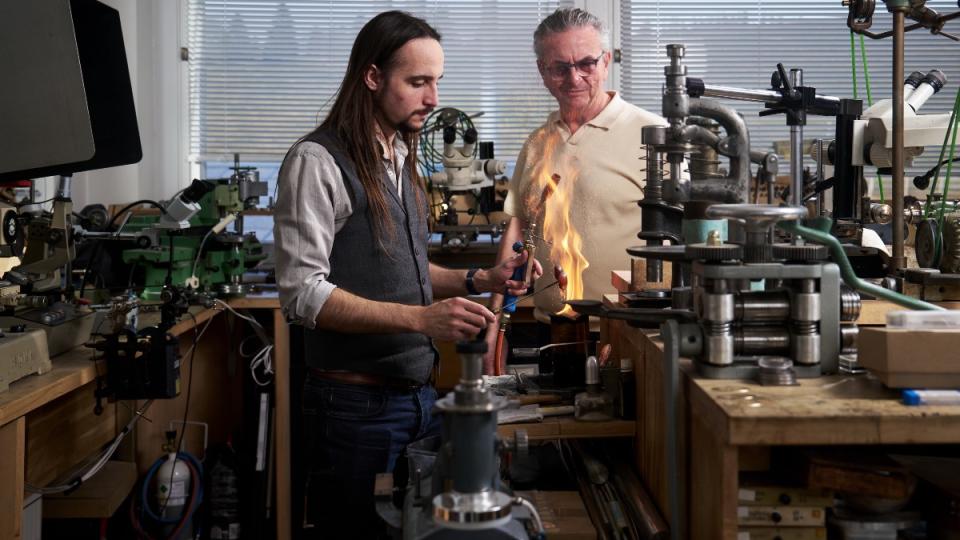
In Renaud’s conceptualization, he observed that the center of the micro-rotor was underutilized real estate, so here is where he decided to install an auxiliary mechanism set to fulfill a simple sequence: to optimize the use of energy released by the rotor and harness even the slightest joule (or unit of energy) to power the watch. The resulting mechanism takes the form of a propeller, animated by a flexible spring, and serves as a central “engine” for the micro-rotor. To the initial concept of the “dancer,” he went on to add a “leg” and a “foot” so that the dancer could function not only as an engine but also a shock absorber that can convert energy much like the strings of a tennis racket, which store energy and then release it like a catapult. The result allows the spring barrel to be 100 percent charged at all times—a major feat.
Housed within the Monday’s 40.8 mm rose-gold case is an entirely new movement designed, developed, and created around “the dancer” micro-rotor. On full display through the exhibition caseback, the caliber RTVI2023 showcases the unusual architecture of the bridges—light and arched like catapults—stretched over the micro-rotor, gear train, and balance wheel. In addition, you’ll notice impeccable finishing: beveling by hand, mirror-polished titanium, a palladium balance wheel, and even a touch of violet grand feu enamel work on the mainspring barrel cover—an unconventional yet elegant aesthetic code of the brand. The straightforward dial also puts the micro-rotor on display at nine o’clock across from a small seconds counter at four o’clock.
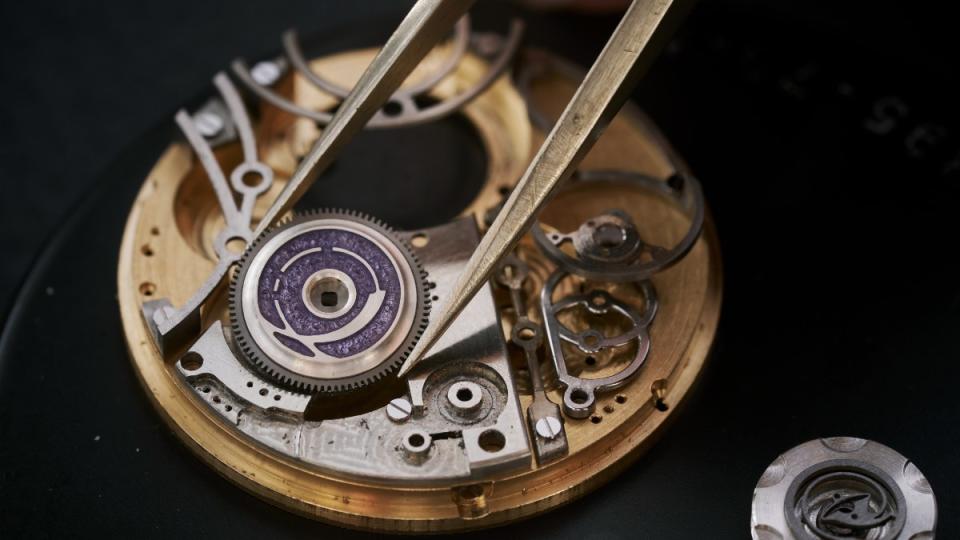
“The raw materials we used for each component were not just for aesthetic reasons—each serves a very specific purpose that is crucial to the performance of ‘the dancer,’” shares Nieto. “For instance, we used platinum for the wheel in the center of the micro-rotor. Why? Not because this is a luxurious precious metal but because we needed something with a substantial weight for the physics of the mechanism to work. Another example is the bridges rendered in titanium—these bridges are so thin that it wasn’t possible to use stainless steel. Each material was thoughtfully chosen for its mechanical application.”
Beyond the Monday, “the dancer” has major implications for the watch industry at large. Throughout his storied career—tracing back to that early contract with IWC—Renaud has been called upon to help develop highly complicated watches incorporating tourbillons, perpetual calendars, and the like. While the inaugural time-only watch of his new brand appears in opposition of that approach, “the dancer” is in fact a gateway to a new era of complicated watchmaking, allowing complications to be added to a timepiece with a micro-rotor for the first time.
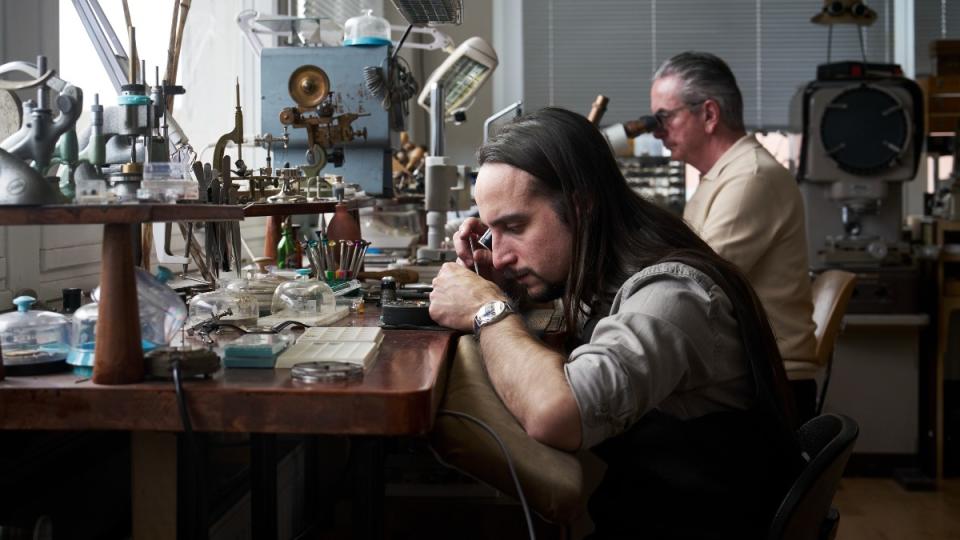
“We have every intention to license the technology of ‘the dancer’ to other brands,” Nieto confirms. “Our philosophy is not to keep our knowledge and inventions to ourselves—our goal is to open doors in the field of watchmaking and advance the art form for future generations.”
However, for this inaugural year of the brand, Renaud Tixier will focus on its own brand development and the production of the Monday. The initial 20 units of the model have been pre-sold to a select group of collectors invited to see early renderings of the prototype, but there are still 40 examples up for grabs. By the end of 2024, Renaud Tixier plans to deliver a total of 60 units to customers. The Monday is priced at $89,750, and you can inquire about purchasing one of the coveted remaining pieces by contacting the brand directly.
Best of Robb Report
Sign up for Robb Report's Newsletter. For the latest news, follow us on Facebook, Twitter, and Instagram.

 Yahoo Sport
Yahoo Sport 





































